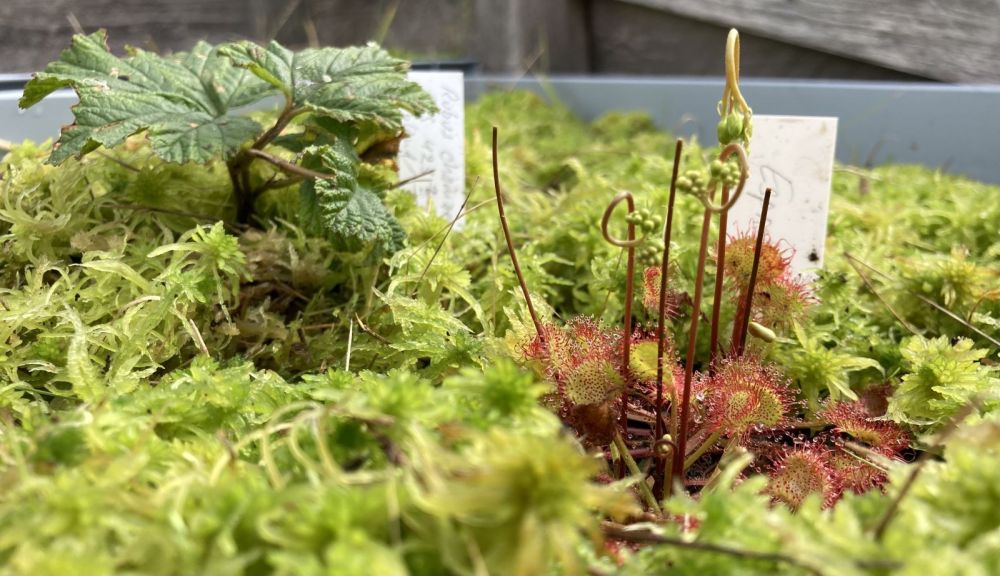SoMoMed
Sundew and cloudberry as medicinal plants in paludiculture

Background
Sundew has been used as a medicinal plant for centuries to treat respiratory diseases and cloudberries are a widely used superfood in Northern Europe due to their high vitamin C and E content. The raw material requirement for sundew and cloudberries in Europe is mainly met from wild collections, but these are not sustainable as a source of raw materials and endanger natural stocks in the long term. There are therefore many reasons for growing both plants regionally. Sundews and cloudberries are typical for wet, nutrient-poor raised bogs and can therefore also be grown in combination with peat mosses on rewetted moors. This climate-friendly management (paludiculture) represents an alternative to traditional, drainage-based agricultural use of peatlands, which is associated with high greenhouse gas emissions.
Project Aims
The aim of the investigations is to research and introduce sustainable raw material extraction of sundew (Drosera rotundifolia) and cloudberry (Rubus chamaemorus) grown on peat moss for medicinal purposes. A combination of cultivation with peat moss paludiculture could potentially provide further incentives for switching to climate-friendly farming methods. The genetic characterization of selected European clans with regard to medically effective ingredients and productivity is intended to create a basis for breeding selection. Varieties with a high active ingredient content and high productivity can therefore be selected for further cultivation tests. By optimizing the culture conditions, active ingredient contents and biomass yields can be further improved. In addition to optimizing cultivation conditions, the focus continues to be on analyzes of market potential, cultivation costs and ecological effects compared to wild collection.
Work packages
- WP1: Collection and cultivation (common garden experiments) of wild forms, project coordination
- WP2: Genetic studies of wild forms
- WP3: Pharmacognostic studies
- WP4: Economic and ecological assessment & market potential
Consortium
- University of Greifswald, Institute of Botany and Landscape Ecology (Prof. Martin Schnittler) (WP 1 & 2)
- University of Greifswald, Institute of Pharmacy/LPG Pharmaceutical Biology (Prof. Sebastian Günther) (WP 3)
- University of Greifswald, Chair of AVWL and Landscape Economics (Prof. Volker Beckmann) (WP 4)











